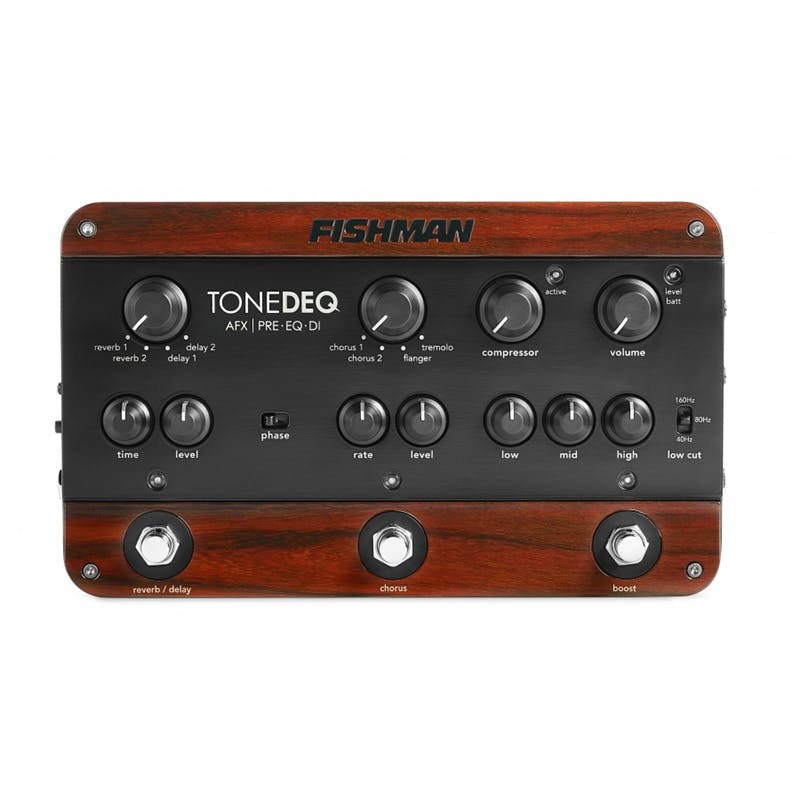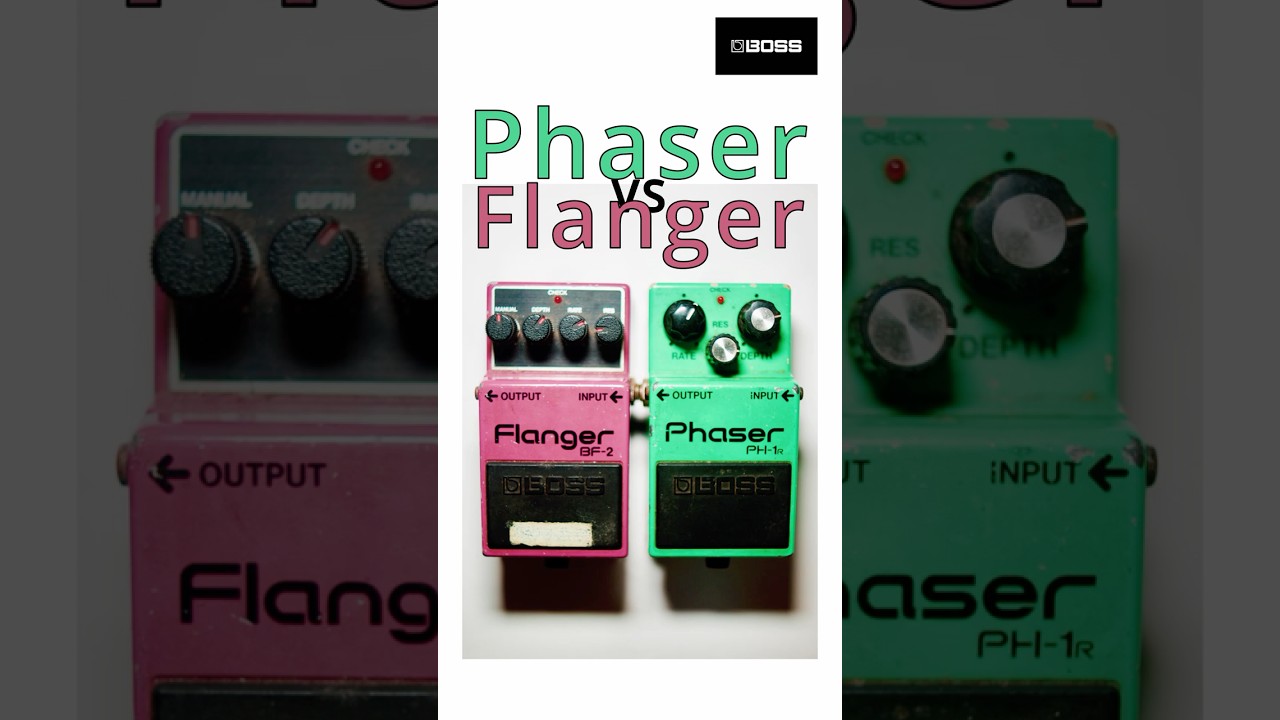Description
The FISHMAN ToneDEQ AFX Preamp, EQ and DI with dual effects is currently retailing at £454 and it is out of stock. Available to be delivered to you by post direct (some charge may apply).The team at Just Pedals think that Fishman nailed it with the FISHMAN ToneDEQ AFX Preamp, EQ and DI with dual effects.
The ToneDEQ Preamp EQ is a complete performance solution for the acoustic musician. With a high-quality preamp, dual effects section, tone controls, a compressor, level booster and a balanced D.I. — it’s got everything you need in one box.
Pure Analog Circuitry
Its analog signal path goes from end to end — from preamp to output — to give acoustic musicians a richer tonal quality. Even the digital effects are mixed in parallel so they don’t affect the purity of your acoustic instrument.
Fully Balanced Stage D.I.
Flexible outputs include a 1/4″ amplifier output and XLR D.I. output for the lowest noise possible. Plus the D.I. features automatic ground-lifting and selectable pre/post EQ settings.
Discrete Class-A Preamp
With Fishman, you get quality discrete class-A signal conditioning created by the leader in instrument preamp design. The high-impedance input is a must when using a passive instrument pickup.
Advanced 4-Band EQ
Legendary 4-band equalizer design provides superior tone control for any acoustic instrument. The variable low-cut filter controls sub-bass effects produced by some passive pickups.
We have new and used Fishman musical equipment available on our website for fast direct delivery from sellers across the UK & Europe.
Fishman is a leading American company specialising in high-quality pickups, preamps, and effects pedals for acoustic and electric instruments. Founded by Larry Fishman in 1981, the brand is renowned for its innovative approach to amplifying natural instrument tones with clarity and precision. Their Aura series pedals, ToneDEQ, and Platinum preamps are highly regarded for enhancing acoustic performance, while the Fluence series pickups offer revolutionary multi-voice technology for electric guitars. Trusted by professional musicians worldwide, Fishman products are designed to deliver studio-quality sound on stage and in the studio.
A dual pedal refers to a pedal that combines two separate effects or functions into one unit. These pedals are designed to give musicians more flexibility and space-saving convenience on their pedalboards. Dual pedals can combine any two effects, such as a dual delay, dual distortion, or dual overdrive, allowing the player to switch between or combine both effects in a single stomp.
Dual pedals are great for musicians who want to streamline their setup while still having access to multiple effects without needing multiple individual units. Popular examples include the MXR M-169 Carbon Copy Analog Delay, which offers both delay and modulation options, and the Electro-Harmonix Holy Grail Neo Reverb, which combines reverb effects with versatile controls. Dual pedals can be a time-saving, space-efficient way to expand your tone-shaping possibilities.
An effect is a modification applied to the instrument’s sound to alter its tonal characteristics, dynamics, or spatial properties. Effects can be achieved through electronic devices such as pedals, processors, or built-in effects units, and they offer a wide range of sonic possibilities.
Musicians use effects to enhance their sound, create unique textures, and expand the expressive capabilities of their instruments across various musical genres.
An EQ (equaliser) pedal allows guitarists to shape their tone by adjusting the levels of different frequency ranges. Most EQ pedals feature multiple frequency bands—typically graphic EQs with sliders for specific frequencies or parametric EQs with adjustable frequency selection and Q width. These pedals can be used to cut unwanted frequencies, boost mids for solos, tighten bass response, or tame harsh treble. EQ is especially useful for fine-tuning distortion, compensating for tonal differences between guitars, or adapting to different amplifiers. Popular EQ pedals include the Boss GE-7, MXR Ten Band EQ, and Source Audio EQ2, making them an essential tool for tone control.
Just Pedals is a new Guitar Effect Pedals Marketplace – We feature new and used Guitar Effect pedals from different sellers, to purchase online from the UK.
A preamp pedal boosts the guitar signal to line level before it reaches an amplifier, shaping the tone and adding warmth, character, or gain. Preamp pedals can be used to simulate the sound of an amplifier’s preamp stage, providing overdrive, distortion, or clean tone shaping. They can also be used to drive amplifiers harder or to add tonal colour and EQ adjustments. Some preamp pedals are designed to mimic classic amp sounds, such as those from Fender, Marshall, or Vox, while others offer more modern, transparent tones. Well-known preamp pedals include the Tech 21 SansAmp, Electro-Harmonix Soul Food, and MXR M81 Bass Preamp, making them a useful tool for tone shaping in both live performances and studio work.
Just the latest videos
Just related products
£271.73
Acoustic instrument preamp with effects 4-band eq with bass, middle, treble, and selectable low cut Dual effects – reverb (2) or delay (2), chorus (2), flanger or tremolo Selectable phase invert for feedback control, Product Dimensions : 24 x 14 x 5 …
read more
£133.14
guitar preamp pedal Fishman AFX Pro EQ Mini Pedal Mini Acoustic Preamp & EQ Power supply: DC 9 V, not included, 152 x 76 x 50 mm, 0.28 kg EQ: 5-band, settings: level, input trimming Made in the USA
20% Off £134.29 £107.58
guitar preamp pedal Fishman AFX AcoustiVerb Mini Pedal Mini Reverb Pedal Power supply: DC 9 V, not included, 152 x 76 x 50 mm, 0.28 kg Settings: Level, Tone, Decay, True ByPass, Hall, Plate and Spring Made in the USA
£123.68
Guitar Preamp Fishman Pedal AFX AcoustiComp Mini Compressor Pedal Power supply: DC 9 V, not included, 49 x 97 x 49 mm, 0.28 kg Settings: Compression, TrueBypass Made in the USA
£98.78
guitar preamp pedal Fishman AFX Broken Record Mini Pedal Mini Looper/Sampler Power supply: DC 9 V, not included, 125 x 76 x 50 mm, 0.28 kg USB-C output for transferring your WAV files, recording quality 24-bit/44.1kHz. Made in the USA









































